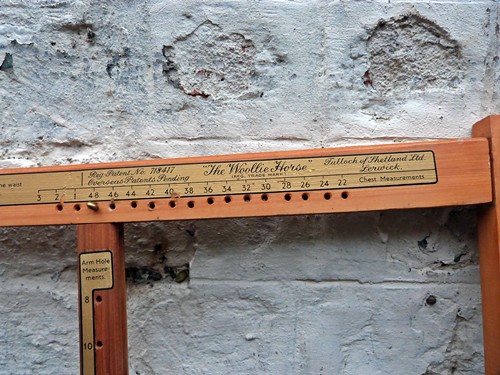"Did you see the 'knit your own sheep' thing outside?" - "I am not sure I want to know.." Dave and I are creatures of habit and we have frequented the same little antiques shop for years. We have come to know the guys running the place quite well: they ask me how to thread a vintage sewing machine, we bring them tea, and the banter is always exquisite. Occasionally I go home with vintage buttons. However, the guys are also very good at pulling practical jokes and I thought the 'knit your own sheep' remark was one of them.
Then I saw what they had put aside for me.
"Are they knitting looms?" one of them asked. No, not knitting looms. "I saw them in the house - this 1930s place up north - and I thought of you," the other one said. "They're yours if you want them."
And so this afternoon I became the proud (if bewildered) owner of two pre-WW2 woollie horses.
They both bear brass plaques marking them out as Tulloch of Shetland woollie horses. The only thing I have been able to discern is that the V&A have a Tulloch of Shetland woollie horse in their collection (identical judging by the description? I am basing my dating upon them, incidentally). Anybody able to shed more light on this company?
So, what is a woollie horse? It is more commonly known as a jumper stretcher or a jumper board. You use them to quickly dry wool jumpers and stop the jumper stretching out of shape whilst drying. They are still being manufactured - Jamieson & Smith sell them - and are said to still being used extensively in Shetland.
Seeing as I would not use two woolie horses, I have given the second one to Ms Old Maiden Aunt. It will feel right at home in her shop window.

